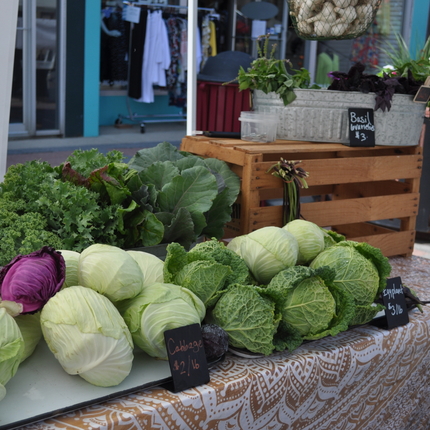The 2018 farm bill required the U.S. Department of Agriculture (USDA) to solicit feedback from farmers about how crop insurance could better serve non-traditional folks.
There are still a few listening sessions you could call into—check out the full schedule here. USDA has contracted with the firm Agralytica to conduct these listening sessions, and they are collecting your feedback.
However, if you aren’t able to join one of the listening sessions, we still encourage you to share your thoughts with Andre Williamson, host of the listening sessions for Agralytica. You can share a short note via email, or call Agralytica directly:
Email: [email protected]. Put “Local foods insurance” in the subject line.
Call: 240.432.0308
When emailing or calling, be sure to introduce yourself and share some basic information about your operation, such as where you are and what you raise.
Here are some questions you could respond to when you call or email. Feel free to only answer one or two if that’s all you have time for.
- Have you ever considered crop insurance for your operation? If not, was it because there was no crop insurance available for you, because you could not find an agent to work with, or another reason?
- How do you currently handle risk on your operation?
- What would you most like to insure on your operation, if you could? Trees, livestock, vegetables, or something else?
- How much would you pay for a crop insurance policy? If you’re not comfortable sharing a particular dollar value, consider sharing it in comparison to some portion of your sales, such as 10 percent of one market day at farmers market.
- Do you already carry insurance on your infrastructure? If so, how could crop insurance complement that existing coverage?
- What losses have you endured where crop insurance would have helped?
The Center for Rural Affairs is also submitting our feedback. If you have any questions, feel free to get in touch. You can reach us at [email protected] or 402.687.2100.
Center for Rural Affairs feedback on local foods insurance
August 28, 2020
Agralytica
240.432.0308
Dear Mr. Williamson,
Thank you for conducting online listening sessions to gather feedback on how crop insurance could better support local foods producers. After attending the virtual session on Aug. 24, we have compiled our written comments here for your review.
The Center for Rural Affairs is a nonprofit organization based in Nebraska and Iowa, with a mission to foster vibrant rural communities. Profitable family farms are key to vibrant rural communities, and sound risk management options are an important part of farm viability. Therefore, the Center has done a variety of outreach to underserved producers on crop insurance options over several years. Through this work, we have identified several recommendations for improving Whole Farm Revenue Protection (WFRP), currently the only real option for local foods producers to purchase crop insurance. These are highlighted below.
Reputation of crop insurance - For those who have not used crop insurance previously, including local foods producers, there is a very strong perception that crop insurance is not for them and not designed for them. Any efforts to expand crop insurance options to local foods producers will need a strong outreach and educational component.
Availability of agents - While Whole Farm Revenue Protection is available for local foods producers, there are several reasons producers have shared with us that it is not widely adopted. Availability of agents interested in selling it is a major one. Many agents have shared with us that they don’t understand WFRP, and that it has a reputation for being complicated, so they do not promote it to their customers. Our understanding is also that traditional crop insurance is lucrative for insurance agents, while paperwork-intensive and small WFRP policies are not. Crop insurance will only work for local foods producers if there are agents interested in, knowledgeable about, and willing to sell them policies, which in turn requires financial incentives for the agents.
Paperwork required - The paperwork and documentation required for traditional crop insurance coverage are widely understood by commodity producers and agents. Local foods producers, however, work with entirely different systems: different crops, different infrastructure, different seasons, different markets. In addition, many local foods producers are growing a large number of crops, and the paperwork required for them to enroll in WFRP is often prohibitive. The well established tools with traditional crop insurance of tracking paperwork, yield, and pricing are not easily adapted or even available to local foods producers. Any new product, or improvements to WFRP, will require significant efforts on education and outreach to ensure that the Risk Management Agency (RMA), Approved Insurance Providers, agents, and farmers are all on the same page about how the policies work and what record-keeping and other paperwork is required.
Appeal of WFRP - Various producers have shared several reasons why they did not purchase WFRP after looking into it, and frustrations they had once they did purchase it. Several were quoted prices that were too high for their needs. Others had trouble filing claims and receiving their indemnities. Greater institutional support from RMA and Approved Insurance Providers towards strengthening WFRP is needed.
If you have any additional questions, please do not hesitate to reach out. We look forward to your final report. Thank you for your consideration.
Anna Johnson
Policy Manager





